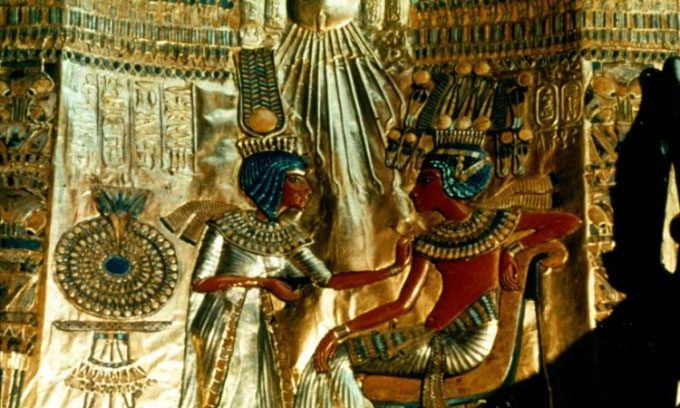The 18th Dynasty, lasting from around 1550 to 1292 BCE, is the longest dynasty in Egyptian history.

Carving of King Tut and Pharaoh Ankhesenamun. (Photo: Alamy).
Ancient Egypt was ruled by a series of pharaohs over millennia. Historians divide this period into various dynasties, where kings were either blood relatives or usurpers of their predecessors. The 18th Dynasty, lasting approximately 250 years, is the longest in Egypt’s history. Scientists estimate the timeline of the 18th Dynasty by analyzing numerous records and dating techniques, including carbon dating, according to Live Science.
The 18th Dynasty began around 1550 BCE, when Ahmose overthrew the Hyksos, a people of Asian origin who had ruled ancient Egypt for over a century. The pharaohs who succeeded Ahmose expanded Egypt’s territory into a kingdom stretching from present-day Sudan to Syria. Among the 18 rulers of the 18th Dynasty was Tutankhamun, or King Tut, whose intact tomb was discovered by a British archaeological team in 1922.
Historians often divide Egyptian history into 30 dynasties. While the 18th Dynasty is described as the longest by Manetho, a historian writing in Greek in the 3rd century BCE, the period of Greek and Roman domination over Egypt lasted longer. The Greek period began in 332 BCE when Alexander the Great invaded the country. Prior to this, the region had been under Persian control. After Alexander’s death in 323 BCE, his empire collapsed, and Ptolemy, one of Alexander’s generals, became the ruler of Egypt. Ptolemy’s descendants continued to govern Egypt for nearly 300 years until Queen Cleopatra died in 30 BCE.
After Cleopatra’s death, Roman Emperor Augustus annexed Egypt as a province of the Roman Empire. Although Roman emperors rarely visited Egypt, artworks depict them being regarded as pharaohs. When the Western Roman Empire fell in 476 CE, the Eastern Roman Empire, headquartered in Constantinople, continued to control Egypt until 646 CE.


















































